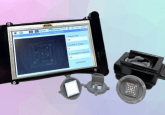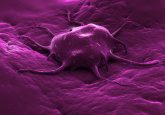Peanut allergies: improving the detection

The new test will improve upon the existing diagnosis which involves a combination of clinical assays and assessments of the patient’s history. Peanut allergies, which may change and develop during an individual’s lifetime, can be very severe and potentially fatal in the case of serious reactions.
The assay, which is thought to be unlike any other, records measurements of both carbohydrate and peptide epitopes from the glycoprotein Arachis hypogaes h2 (Ara-h2), using surface plasmon resonance (SPR). The scientists from the University of Connecticut (CT, USA) who developed this immunoarray hope the test can be developed into a system capable of assessing the severity of an allergy.
Ara-h2 is the most potent allergen from the Arachis hypogaes family and the major peanut allergen for sufferers.
The test utilizes antibody-loaded magnetic particles to detect antibodies binding to the Ara-h2 peptide, carbohydrate and anti-immunoglobulin E (IgE). Both peptide and carbohydrate residues are involved in binding to IgE antibodies formed in the body during an allergic reaction.
The approach pre-captures the desired antibodies with magnetic beads to prevent any potentially interfering biomolecules from entering the array. The beads also enable the detection of antibody concentrations as low as 0.5–1pg mL–1 by amplifying the response of the SPR signal.
“This is an exciting advance in ultrasensitive detection and an improvement on current detection strategies for IgEs, which will undoubtedly find a much broader application in bioanalysis and diagnostics,” enthused Tia Keyes, a spectroscopy expert from Dublin City University (Ireland).
The next stage for this research will involve the development of a method to differentiate the IgE antibodies from a variety of peanut allergen peptides and carbohydrates. It is “interesting initial data, however, the ability to discriminate the glycan or the allergen (selectivity) has not been convincingly demonstrated,” commented Marcos Alcocer, a food allergy expert at the University of Nottingham (UK). Alcocer stated it is “a potentially useful technique, but not quite yet the claimed high throughput array.
Sources: Ultrasensitive peanut allergy test; Joshi AA, Peczuh MW, Kumar CV et al. Ultrasensitive carbohydrate-peptide SPR imaging microarray for diagnosing IgE mediated peanut allergy. Analyst. 139(21), 5728-5733 (2014).






